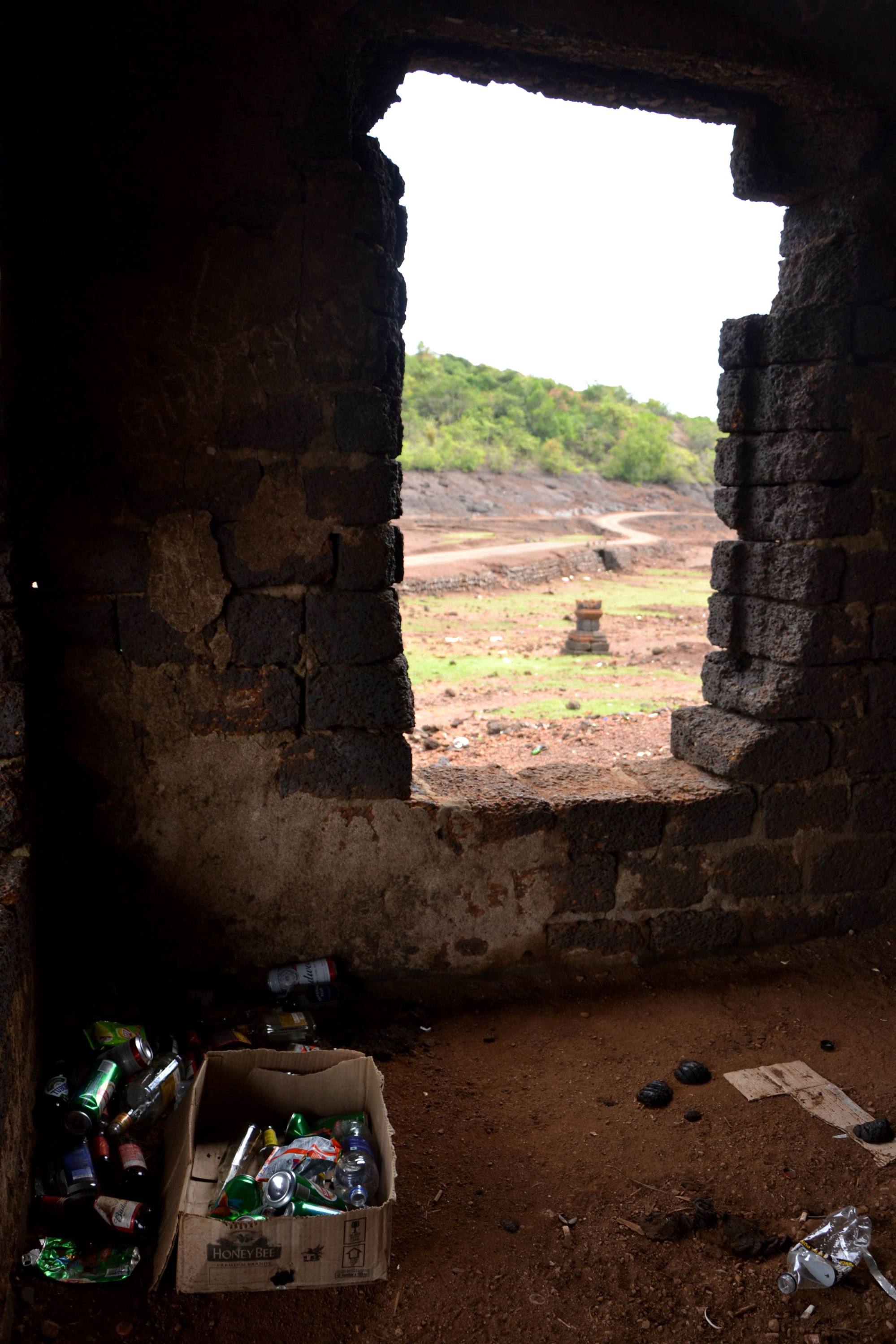Houses in ruins, a washed-out temple, cracked earth surrounding puddles of water and a deafening silence welcome summer visitors to Kurdi in Goa, western India.
Submerged for most of the year, the remnants of the once thriving village, also known as Curdi, re-emerge from receding reservoir waters during the hot summer months to remind visitors of a bygone era.
In 1986, Kurdi was flooded by the reservoir of the then newly built Salaulim Dam. It had been a village of paddy fields, and plantations of coconut, jackfruit and mango trees, which flourished on the banks of a canal.
It had a school and a chapel, as well as the ancestral home of classical vocalist Mogubai Kurdikar (1904-2001). Kurdi also had a 10th century Mahadev temple, which was dismantled by the Archaeological Survey of India and rebuilt in Shelpem, about 15km (9 miles) away.
Around 600 families – 3,000 villagers in total – were displaced to make way for the dam and reservoir, which provides water to the South Goa district.
The families were compensated with agricultural and residential land 15km away, in Vaddem and Valkinim, where most still live.

However, the villagers have kept Kurdi alive in their memories and share their reminiscences with their children.
Gurcharan Kurdikar (the name Kurdikar refers to Kurdi), who was 10 years old when Kurdi was flooded, has spent many years photographing his old village as it re-emerges from the water.
“We had to literally run with our belongings when the dam water entered our house,” recalls Kurdikar, a software engineer.
Internet, air links reach Kashmiri former Silk Road outpost. Tourists next?
Internet, air links reach Kashmiri former Silk Road outpost. Tourists next?
He returns annually to host the Utsav festival, which attracts many former residents of the village and is held on the third Sunday of May at Kurdi’s Someshwar Temple (the dome of which is visible year round); they sing religious songs. The following Sunday a feast is held at the former Sacred Heart of Jesus Chapel which re-emerges from the reservoir’s waters.
Another who has been inspired by the annual reappearance of the village is filmmaker Saumyananda Sahi. In 2015, with Kurdikar’s help, he made a documentary, Remembering Kurdi, that shows the loss the villagers suffered when they left their land, homes and places of worship underwater.
Remembering Kurdi and subsequent social media coverage have attracted other Goans keen to witness the village reappear.

Unfortunately, the new visitors have brought with them plastic, glass and other picnic litter. And sometimes they damage the frail laterite walls of the old houses by climbing them to get images for their social media feeds.
“I now resent making this place popular. People don’t deserve such a place,” says Kurdikar, who joins others in cleaning up their old village each year before the Utsav festivities begin.
He maintains that his main intention had been to highlight the plight of the displaced, not promote Kurdi as a seasonal tourist attraction.

“The biggest irony is that we sacrificed our homes to give water to the people of Goa. But now we stay in a place [Vaddem] with no regular water supply in summer as our wells turn dry,” says Kurdikar. “We have to rely on water tankers.
“That’s not all. We regularly experience power cuts; there’s no proper mobile coverage.
“With the [new-found] attention, some of these issues are being solved, but Kurdi has again faced the brunt of the insensitive nature of people.”

In an attempt to highlight the history of the village in a tactful manner, heritage walks are being conducted by the likes of Soul Travelling, a South Goa tour company that specialises in offbeat experiences.
“We started conducting this trail from 2019 where we focused on telling both sides of the story – the sacrifice of the villagers and why we needed a dam,” says founder Varun Hegde.
During the two-hour walk, displaced villagers share their stories with visitors; they point out the remains of their homes and wells, and describe how prosperous their village once was. They also explain the hardships they have faced since having to move.

Even as he anticipates the crowds descending again on Kurdi as it rises anew from the waters of the Salaulim Dam, Hegde warns of the threats posed by climate breakdown.
Last year, extreme heat in May made the excursion an unpleasant one for many visitors and the previous year, the water didn’t recede as expected because of unseasonal rains.
“There is a need for proper planning to experience this place due to (the) massive crowd it attracts. Otherwise, in four or five years, there’s a danger of it getting overwhelmed,” Hegde says.







